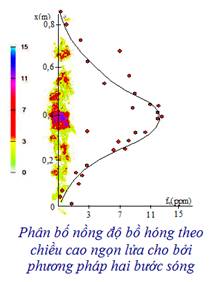Diesel Combustion Radiation
GATEC
Heat radiation transfer in the combustion chamber of diesel engines is divided into two sources: the radiation source of the gas and the radiation source of soot clouds, in which soot radiation plays a major role. In forced ignition engines using homogeneous mixture, the soot amount in the combustion products is very low, so the main radiation is from gases such as H2O, CO2. Then heat radiation transfer is often calculated approximately 10% ofconvective heat transfer. In diesel engines, it is estimated that the heat radiation transfer in combustion period can make up about 40% of the total heat transfer. This valuedepends on the shape of the combustion chamber, fuel use, operation mode, survey location …
Calculating the heat radiation transfer from the diffuse flame into the combustion chamber is extremely complicated because in addition to relatively determining the geometric parameters of emission and absorption matters, it should also identify the thermal radiation of soot present in the combustion products. Therefore, in some mathematical models of combustion, the detailed calculation of heat radiation transfer is often omitted. The heat transfer coefficient was estimated by the total heat transfer rate.
To improve work efficiency of modern diesel engines, it is needed to reduce all possible heat loss, in which the heat loss due to radiation makes up an important part. Detailed calculation of heat radiation transferred from the diffusion fire into the combustion chamber based on the coefficient of soot radiation. This coefficient depends on the soot features.
In recent years, mathematical models have been built to predict specific soot parameters based on theories creating soot platform, in which Tenser-Magnusson theory is widely used.

More detail
English Translation by BS











